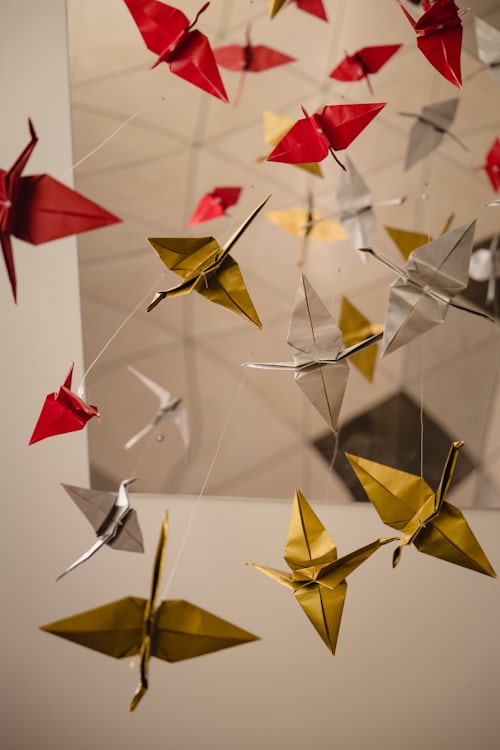Origami, (折り紙), a combination of 2 Japanese words, “ori” – “to fold” and “kami” – “paper” is Japanese traditional art, which paper was folded in different shapes with no assist of glue or scissors. Common taking shapes of animals (dog, cat), flowers, planes, and boast.

The history of Japanese Origami
People believed that the original origami began back in the 6th century. At that time, origami only used for ceremony purposes only (usually in a religious ceremony), said due to the cost and value of the paper.
The most common form of origami takes shape as a crane. In Japanese, Korean and Chinese culture, the crane is believed to brings good fortune and longevity. In Western, the common story is the cranes bring children to families, represent peacefulness and happiness. Japan has a saying, a pray that mothers use to wish for the protection of their children under the crane wings.
“O flock of heavenly cranes covers my child with your wings.”
People believed that once you fold a thousand cranes, your wish shall come true.

Eventually, Origami becomes a symbol of hope.
Traditionally, it was believed that if one folded 1000 origami cranes (“senbazuru”) called one’s wish would come true. Usually, there are 40 cranes strung together that made 25 strings and will be given as gifts to sick people, children, people who need hopes.

There is a famous story about 1000 cranes after the Hiroshima and Nagasaki atomic bombs event. It’s the “Sadako and the Thousand Paper Cranes”. Sasako is a student living in Nagasaki. She diagnosed with leukemia, caused by the radiation of the bombing event in Hiroshima, Sadako’s health going down. A friend came and told her the story of 1000 cranes and a wish, Sadako was inspired and determined. She began her journey to fold 1000 cranes, and it took her 10 years. Sadly, Sadako passed away. After her deaths, her friends and family started a national campaign. And the result, the Children’s Peace Statue was built to remember Sadako and many other children who pass away the result of the bombing.
Now you can come to the Hiroshima Peace Memorial Park, where Sadako is holding a large crane, facing forward, while thousand of paper cranes are strung and decorate by people around the world.
To this day, the story about Sadako is being told around the world and people are taking part in crane folding. At Homii, we have a short video instruction that could help you fold one. Join us in the journey of given out more hope.


